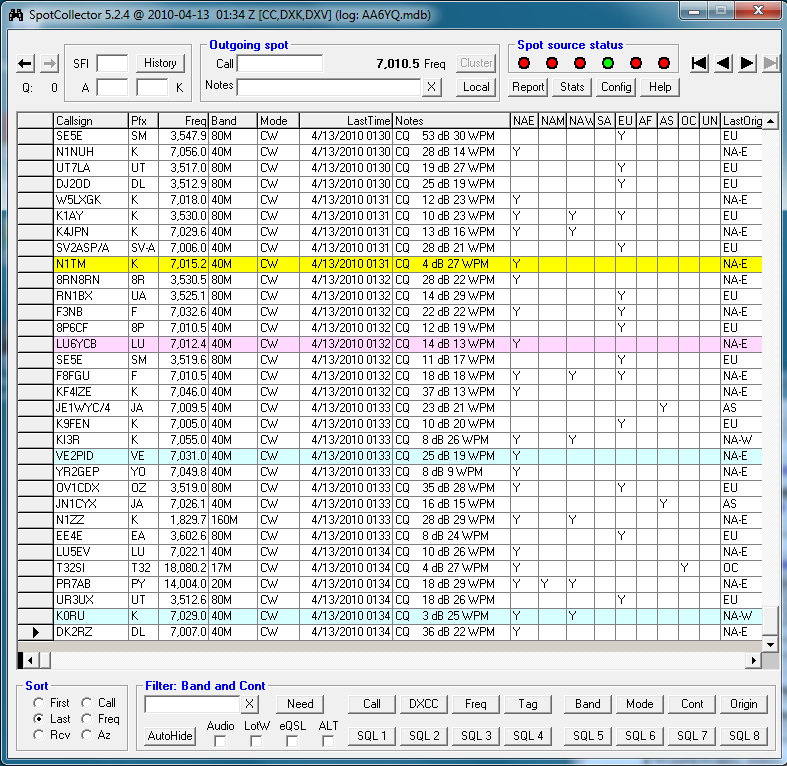DXLab is a freeware suite of eight interoperating applications designed to automate amateur radio DXing activities. Each of the applications can be independently installed and utilized; when multiple applications are running, they sense each other's presence and automatically interoperate.
One of these applications, SpotCollector, lets you collect DX and WWV spots from up to 4 different telnet clusters, a packet cluster, and the DX Summit web cluster. SpotCollector merges spots from these 6 sources into a local Spot Database that maintains one entry for each active DX station: here's SpotCollector's Main window with a single spot source: the Reverse Beacon Network (RBN), the aggregated output of CW Skimmer receivers located around the world:

You're looking at the 32 most recently spotted stations, which as you can see from the LastTime column arrived over the last 5 minutes. Note the absence of duplicates; each entry displays information from multiple spots. The entry for F8FGU, for example, shows that this station was heard on the North American East Coast (NAE), the North American West Coast (NAW), and Europe (EU); the most recent sighting was from NAE. The background color coding shows N1TM is known to QSL via LotW, that LU6YDB QSLs via eQSL.cc, and that VE2PID and K0RU QSL via both LotW and eQSL.cc.
But we're only looking at the last 5 minutes worth of information. What's really going on? To find, out we'll click the Stats button near the upper-right corner.
| 1 |
|
|
| Next |